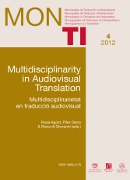Casting the light on cinema – how luminance and contrast patterns create meaning
##plugins.themes.bootstrap3.article.main##
Resum
Descàrregues
##plugins.themes.bootstrap3.article.details##
La propietat intel·lectual dels articles pertany als autors i els drets d'edició i publicació, a la revista. Els articles publicats en la revista podran ser utilitzats lliurement per a propòsits educatius i científics, sempre que se'n faça una correcta citació. Qualsevol ús comercial és expressament penat per la llei.
Referències
Anderson, Joseph D.; Barbara Fisher Anderson & David Bordwell (eds.) (2005) Moving image theory. Ecological considerations. Carbondale: Southern Illinois University Press.
Arijon, Daniel. (2010) Gramatyka języka filmowego. Translated by Feliks Forbert-Kaniewski. Warszawa: Wydawnictwo Wojciech Marzec.
Bordwell, David & Kristin Thompson. (1990) Film art: an introduction. 3rd ed. New York: McGraw-Hill Publishing Company.
Brill, Lesley. (2006) Crowds, power, and transformation in cinema. Detroit, Michigan: Wayne State University Press.
Brown, Blain. (1996) Motion picture and video lighting. Burlington, MA: Butterworth– Heinemann.
Campbell, Drew. (2004) Technical theatre for nontechnical people. New York: Allworth Press.
de Fez, Desirée. (2007) Películas clave del cine de terror moderno. Barcelona: Ediciones Robinbook.
Dyer, Richard. (1997) White. London: Routledge.
Fellini, Federico & Giovanni Grazzini (eds.) (1988) Comments on film. Translated by Joseph Henry. Fresno: California State University.
Fix, Ula & Morgner Henrike. (2005) “Narration in Hörfilm – Theorie und Analyse”. In: Fix, Ula (ed.) (2005) Hörfilm. Bildkompensation durch Sprache. Berlin: Erich Schmidt Verlag.
Geuens, Jean-Pierre. (2000) Film production theory. Albany: State University of New York Press.
Gutiérrez San Miguel, Begoña. (2002) “La luz como elemento expresivo de la narrativa audiovisual”. Revista Comunicar 18: Descubrir los medios. p. 101.
Malkiewicz, Kris. (1986) Film lighting. Talks with Hollywood’s cinematographers and gaffers. New York: Fireside.
Millerson, Gerald. (1991) Lighting for Video. 3rd ed. Oxford: Focal Press.
Mital, Parag K.; Tim J. Smith; Robin L. Hill & John M. Henderson. (2011) “Clustering of gaze during dynamic scene viewing is predicted by motion”. Cognitive Computation 3:1. pp.5-24. Full-text version at: http://www.springerlink.com/content/u56646v1542m823t/fulltext.pdf
Monaco, James. (2009) How to read a film. Movies, media and beyond. 4th ed. New York: Oxford University Press.
Musburger, Robert B. & Gorham Kindem. (2009) Introduction to media production. The path to digital media production. Oxford: Elsevier Inc.
Nelmes, Jill. (2003) An introduction to film studies. 3rd ed. London: Routledge.
Oppenheimer, Jean. (2010) “An emotional transformation in Peru”. American Cinematographer 91:9. p. 33.
Orero, Pilar. (2008) “Three different receptions of the same film”. European Journal of English Studies 12:2. pp. 179-193.
Orero, Pilar. (2012) “Film Reading for Writing Audio Descriptions: A Word is Worth a Thousand Images?” In: Perego, Elisa (ed.) 2012. Emerging topics in translation: audio description. Trieste: ETU. pp. 13-28.
Ostaszewski, Jacek. (1999) Film i poznanie: wprowadzenie do kognitywnej teorii filmu. Gdańsk: Wydawnictwo Uniwersytetu Jagiellońskiego.
Revault d’Allonnes, Fabrice. (2003) La luz en el cine. Madrid: Cátedra. Rockett, Will H. (1988) Devouring whirlwind. Terror and transcendence in the cinema of cruelty. Connecticut: Greenwood Press, Inc.
Sipos, Thomas M. (2010) Horror film aesthetics. Creating the visual language of fear. North Carolina: McFarland.
Solso, Robert L. (1994) Cognition and the Visual Arts. Cambridge, Massachusetts: MIT Press.
Stafford, Roy. (2007) Understanding audiences and the film industry. London: British Film Institute.
Sturken, Marita & Lisa Cartwright. (2001) Practices of looking. An introduction into visual culture. New York: Oxford University Press.


